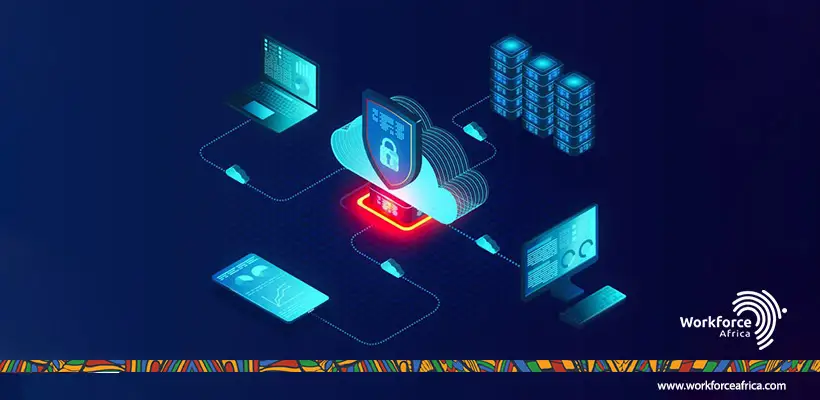Experiencing frequent complaints about the payroll system in your organisation?
Then you should realise that surely, something in the system isn’t working well. Regular payroll mistakes — for example — are signs that you should conduct frequent audits of the entire payroll process whilst you consider using or upgrading your payroll technology.
A payroll solution ensures rapid and accurate pay for your employees. Payroll is complex. It differs between countries and comes under regular scrutiny from the authorities. Mistakes during payroll processing lead to employee frustration, reputational damage, and costly fines.
Companies are surprised by the upgraded payroll system options presented to them. The payroll software companies use today is an improvement from the manual processes they used in the past.
However, this improvement differs from a superior solution.
If you are considering multiple options for your company but are unsure how to select worthwhile programs, these eight “Must-Have” payroll system requirements could help you get started.
Businesses aspire to expand their operations, short or long term, and the payroll system chosen must have the requirements needed for a growing business. Software with a prolonged use life is what you need.

You can access many payroll systems from various mobile platforms—for example, staff access essential data without the company’s devices. In addition, you can access cloud-based payroll software from any device with an internet connection and the necessary credentials to log in. It is especially beneficial if the staff are remote workers. However, desktop payroll software only allows access from computers where the software is installed, severely limiting the system’s benefits.
Any payroll software’s central purpose is to compensate employees correctly; thus, the software must allow for bonuses, deductions, contributions, and insurance.
In addition, compensation administration calculates payment details, starting with initial salary agreements and adapting to changes throughout employment. It includes adjustments for minimum wage raises, bonuses, and premiums.
In essence, these features aim to implement proper compensation plans, factoring in all elements that affect payment correctly the first time. In addition, payroll software provides accurate payment deductions and tax calculations on financial transactions.
Together with compliance management tools, such a solution informs users of any upcoming deadlines or law changes that could cause errors if unchecked. Equally essential is the filing of tax forms, which is automated for prompt completion without errors or mistakes.
Payroll systems handle all processes necessary to executing tax form completion and submission, either digitally or with the help of little support. In addition, relying on software for tax functions ensures accuracy without needing additional inputs from the Accounting or HR department and, as a result, gives less possibility for human errors.
Thus, comprehensive tax services save time, money, and labour and add efficiency to the tax process.
Payroll System Requirements #4 – Dashboard and Reporting.
Your payroll software should have easily extractable information in any format, schedule, and auto-generate reports and workflow. Business intelligence features present data in reports, providing insight into current processes. Furthermore, in addition to observing present trends, human resource departments can interpret findings and make decisions based on those predictions.

Your payroll system contains sensitive banking and employee contact information that could result in massive fraud when in possession of bad actors. Thus opening you up to potential legal action, resulting in many penalties for your business.
Therefore, security is a must-have when choosing payroll software. In addition, any reputable company should have security precautions readily available for review on their website.
If you contact the software providers directly, a customer service representative should be able to provide additional security specifications. However, never trust your business to a payroll service provider with lacklustre security policies; it simply isn’t worth the risk.
Worthy of note is checking the type of security used, including the number of admin users allowed, password protection, and disaster recovery plans or data backup. You may also want to see how the software can protect your data stored on their servers from theft or a natural disaster.
Labour Law compliance features should monitor local, federal and global standards to ensure all processes follow necessary local laws and regulations.
To ensure that your payroll software provider has the necessary features:
Compliance is automated, with notifications that alert users of any changes to relevant regulations.
Your organisation should be centralised by your organisation by automated accruals and rules, leave history records, employee and manager self-service options, scheduling tools recording employee hours and absences, etc.
And this should be a feature of the ideal software of choice.
Managers should be able to create custom schedules based on employee requests whilst simultaneously viewing time-tracking data within the software for the best time management results.
In addition, notifications should inform employees and managers of any changes, making scheduling a collaborative effort.
Finally, automated calculations of overtime, premiums, and differentials should be included as a feature, thereby providing accurate compensation due to accurate time tracking data.
Financial benefits aside, managing payroll & HR from a single system is as vital as operating multiple systems is time-consuming and injurious to overall business productivity.
As a result, companies tend to integrate their payroll and HR systems onto a single platform. This reduces the amount of data manually transferred from across systems since the software can automatically import, export, and update data across various departments.
Not having this feature will result in payroll & HR staff copying data that could have been done instantly using an automated integration. Furthermore, an all-in-one payroll software is convenient during the onboarding process, where information gathered can be rapidly integrated throughout the system in real-time.
Before buying new software, figuring out what your company must have to keep up with competitors and keep staff happy is essential.
By following this checklist, you’ll have a fool-proof roadmap to identifying the perfect payroll software solution for your business and a portrait of the ideal payroll software seller.